How to Master Sight-Reading - Part 1
Posted on
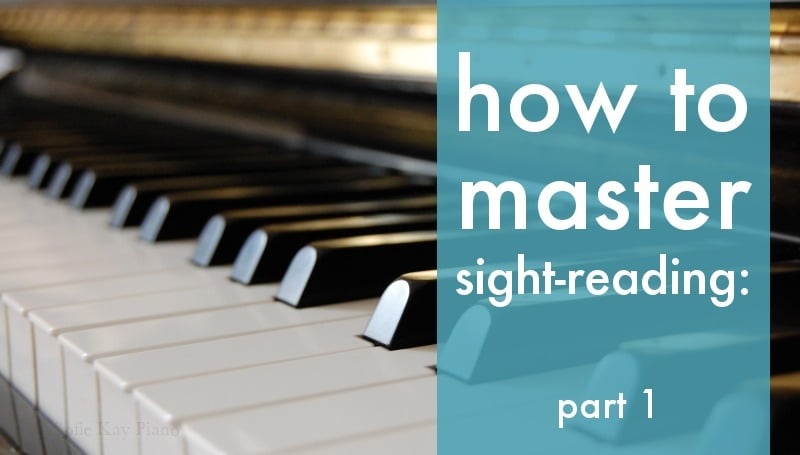
Say whaaaat! Yes. That's right. You heard me. You can actually master sight-reading. I'm not just saying that it's possible for people to master sight-reading. It's possible for you to master sight-reading. No, I am not kidding.
Sight-reading, in my view, is the ability to play sheet music that you haven't seen before, up to speed, with few errors, and minimal effort. It's a dream for many young pianists to be able to sight-read well, not just because it is a big component of the ABRSM grade exams, but because it makes learning new music so much easier. I wanted to create a complete crash course to help you, the young pianist, really understand what sight-reading is all about.
Part 1. Get to know the grand staff...(the quick way)
Here is a picture of the grand staff. It is made up of two sets of five lines, called staves. There are symbols at the beginning: the top symbol is called the Treble Clef (for notes above middle C, usually played with your right hand), and the bottom symbol is the Bass Clef (for notes below middle C, usually played with your left hand).
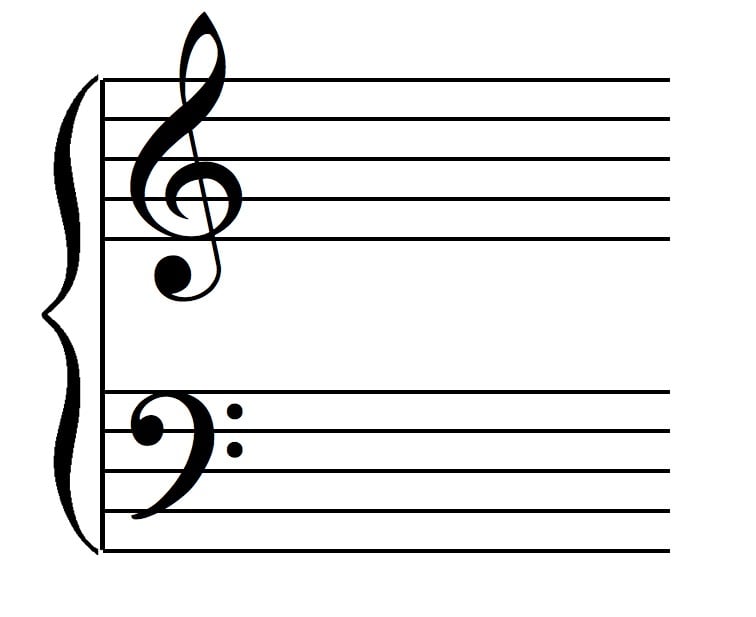
One quick way to learn how to read notes off the stave is to learn a handful of 'anchor notes' - notes that you know off by heart without thinking, and can utilise to find out what other notes are.
Often when my students start learning the piano, they will assume that middle C is the middle note on the piano, but it isn't! Middle C is the middle note on the grand staff. To tell you which hand to play it with, it'll either appear in the Bass clef or the Treble clef. It is quite a distinct note, with its own short line running through the middle, between the two staves.
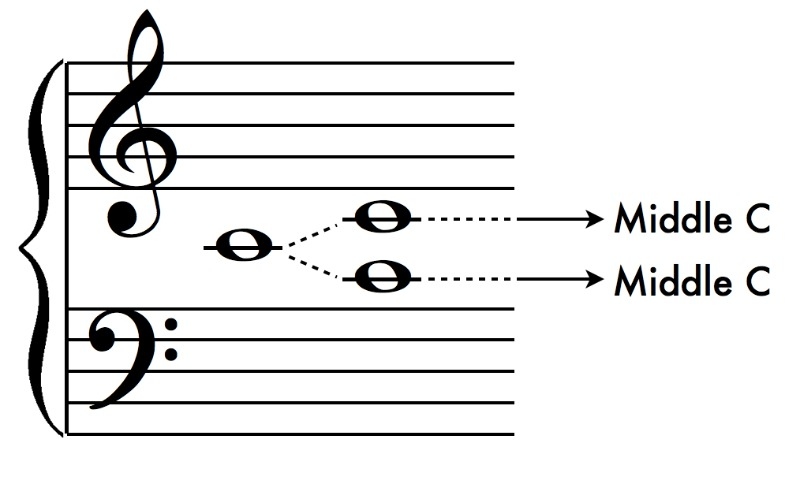
Helpfully, the treble clef is also known as the G clef, and the bass clef is also known as the F clef (it rhymes!). The reasons for these alternate names?
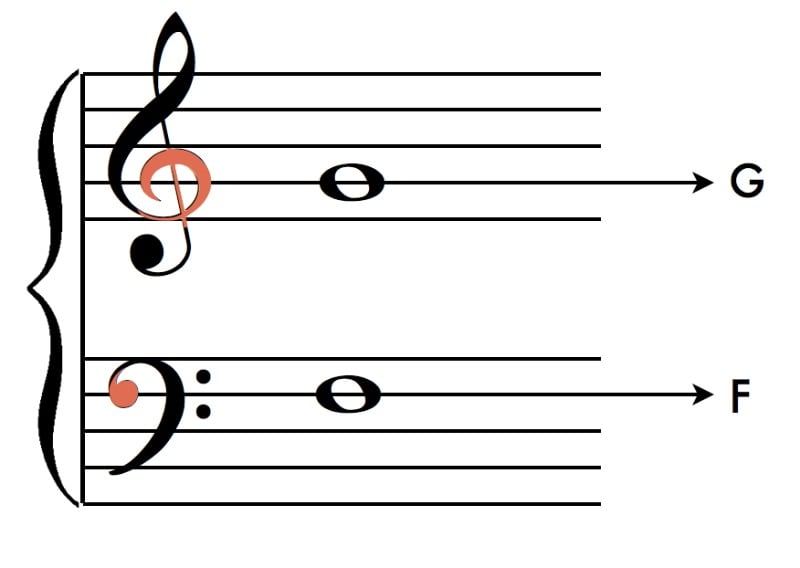
The G clef curls around the G line, and the F clef starts on the F line!
If I'm honest, I really resisted learning these names for the clefs when in my first few years of learning piano, but now that I teach, I've realised that they are ridiculously helpful for piano students. So, remember the alternative names of the clefs, and G and F become two more anchor notes for you.
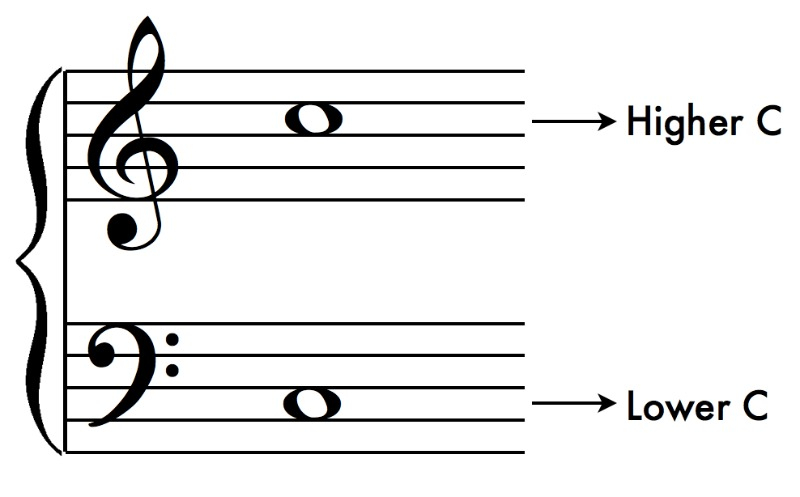
Notes can either be sitting in spaces or around lines, and these two are in spaces (obvs). They are quickly recognisable because of the symmetry here - they are both in the second space from the outside of the staves. Check out the next two Cs, too:
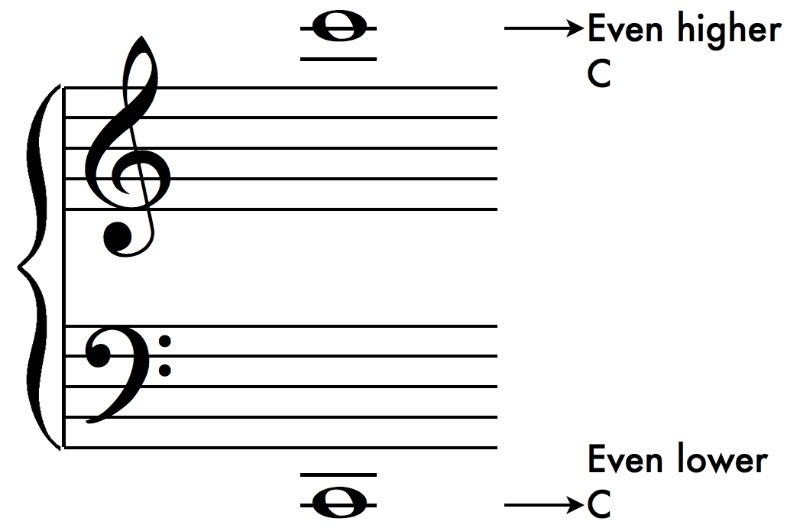
Is this getting easier? I hope so.
Here are 2 more anchor notes in each clef for you to memorise: the outside lines for each of the staves. If it helps, you can think of them as an octave-plus-one away from each other!
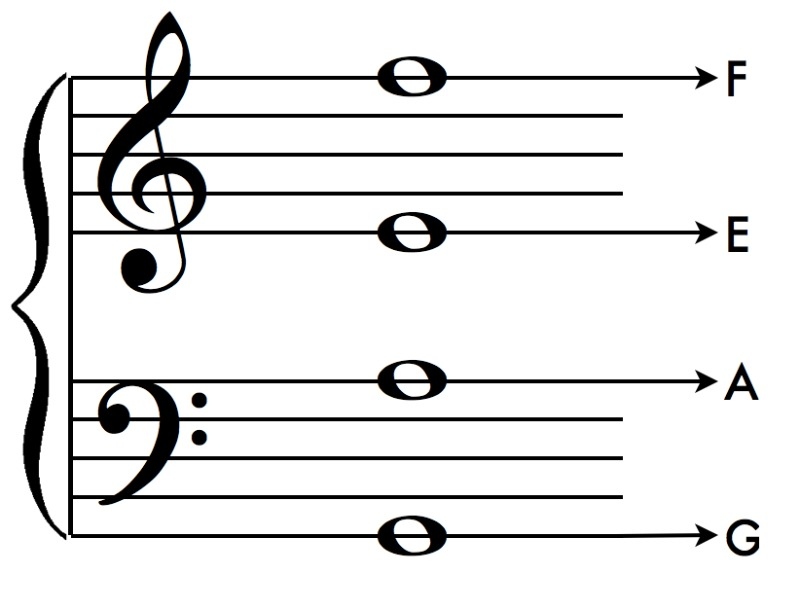
Download this worksheet based on the anchor notes for a full experience! That's it for now. If you really learn these between now and next week, when I'll post the next instalment, you'll be well on your way to being able to sight-read quickly and effortlessly!

Add a comment: